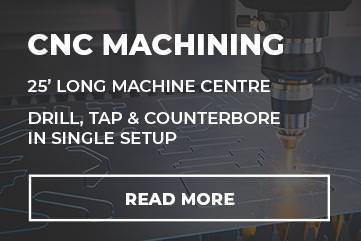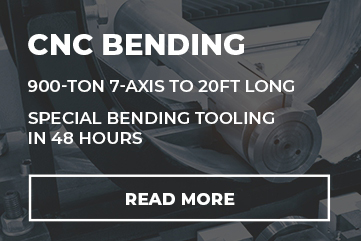News
The Ultimate Guide to Architectural Fabrication: Techniques and Trends

Architectural fabrication is a cornerstone of modern construction, integrating artistry with structural functionality. This guide explores the diverse techniques and current trends in architectural fabrication, highlighting the pivotal role of architectural steel fabricators and the innovation in architectural metal fabrication processes. Learn how architectural fabrication shapes contemporary architecture, from intricate designs to sustainable practices.
Understanding Architectural Fabrication
Architectural fabrication involves creating structural components and artistic elements in buildings and other structures. It uses steel, aluminum, glass, and composites to achieve desired aesthetics and functionality. The process is guided by precision engineering and craftsmanship and executed by skilled architectural steel fabricators.
Techniques in Architectural Fabrication
Welding and Metal Joining
Welding remains a fundamental technique in architectural steelwork, allowing fabricators to connect metal components seamlessly. Advanced methods like TIG (Tungsten Inert Gas) welding and MIG (Metal Inert Gas) welding ensure structural integrity and aesthetic appeal.
CNC Machining and Precision Cutting
Computer Numerical Control (CNC) machining enables precise cutting and shaping of metals, facilitating intricate designs with high accuracy. This technology is indispensable in creating custom architectural elements tailored to unique project requirements.
Metal Forming and Bending
Metal forming techniques, such as press braking and roll forming, shape metal sheets and profiles into desired forms. These processes are crucial for producing curved and sculptural elements that enhance architectural aesthetics.
3D Printing in Architectural Fabrication
Emerging technologies like 3D printing are revolutionizing architectural fabrication by enabling the efficient production of complex geometries and customized components. Additive manufacturing techniques offer design and material usage flexibility, contributing to sustainable construction practices.
Trends in Architectural Fabrication
Sustainable Materials and Practices
There is a growing emphasis on sustainable architectural metal fabrication, with a shift towards using recycled materials and adopting eco-friendly processes. Fabricators are integrating renewable energy solutions and minimizing waste to reduce environmental impact.
Integration of Digital Design Tools
Advancements in digital design tools, such as Building Information Modeling (BIM) and parametric modelling, enhance collaboration and efficiency in architectural fabrication. These tools streamline communication between designers, fabricators, and contractors, ensuring precise execution of architectural visions.
Modular Construction Techniques
Modular construction methods are gaining popularity due to their efficiency and cost-effectiveness. Fabricated off-site, modular components can be assembled quickly on-site, reducing construction time and minimizing disruption to the surrounding environment.
Incorporation of Smart Technologies
Architectural fabricators increasingly incorporate smart technologies into building components, such as sensor-integrated facades and responsive building envelopes. These technologies improve energy efficiency, occupant comfort, and overall building performance.
Architectural Steel Fabricators: Masters of Craftsmanship
Role of Architectural Steel Fabricators
Architectural steel fabricators are crucial in translating architectural designs into tangible structures. They possess expertise in metalworking techniques and ensure quality and precision throughout the fabrication process, from initial concept development to final installation.
Skills and Qualifications
Successful architectural steel fabricators combine technical proficiency with artistic sensibility. They are proficient in reading technical drawings, conducting material assessments, and employing fabrication techniques that meet stringent architectural and engineering standards.
Collaborative Approach
Collaboration between architects, engineers, and fabricators is essential for successful architectural projects. Architectural steel fabricators contribute their specialized knowledge to optimize designs, resolve structural challenges, and deliver innovative solutions that meet client expectations.
The Future of Architectural Fabrication
Advancements in Materials Science
Ongoing research in materials science is expanding the possibilities of architectural fabrication. Innovations in lightweight metals, composite materials, and bio-based alternatives pave the way for sustainable and resilient architectural solutions.
Customization and Personalization
Consumer demand for unique architectural expressions is driving the trend toward customization and personalization in fabrication. Fabricators leverage digital technologies to offer bespoke solutions that reflect individual aesthetic preferences and functional requirements.
Embrace of Biophilic Design Principles
Biophilic design principles that emphasize connections with nature influence architectural fabrication. Integrating natural elements and organic forms into building facades and interiors enhances occupant well-being and environmental sustainability.
Conclusion
Architectural fabrication is at the forefront of innovation in contemporary architecture, blending craftsmanship with technological advancements to realize visionary designs. The field continues to evolve from the intricate welding techniques of architectural steel fabricators to the integration of smart technologies and sustainable practices. Understanding the techniques and trends in architectural metal fabrication is essential for architects, designers, and stakeholders aiming to create functional, aesthetically inspiring, and environmentally responsible spaces.
FAQs
What is architectural fabrication?
Architectural fabrication involves building structural components and decorative elements, utilizing steel, aluminum, and glass materials.
How do architectural steel fabricators contribute to construction projects?
Architectural steel fabricators specialize in metalworking techniques to fabricate and install architectural components, ensuring structural integrity and aesthetic appeal.
What are the primary techniques used in architectural metal fabrication?
Key techniques include welding, CNC machining, metal forming, and 3D printing, each contributing to the precision and complexity of architectural designs.
What are the current trends in architectural fabrication?
Trends include sustainable materials, digital design tools, modular construction, and smart technologies, transforming architectural projects’ conception and realization.
How does architectural fabrication support sustainable practices?
Architectural fabrication promotes sustainability through recycled materials, eco-friendly processes, and innovative technologies that enhance energy efficiency and reduce environmental impact.








